Effects of endoplasmic reticulum stress on group VIA phospholipase A2 in beta cells include tyrosine phosphorylation and increased association with calnexin
- PMID: 20732873
- PMCID: PMC2962484
- DOI: 10.1074/jbc.M110.153197
Effects of endoplasmic reticulum stress on group VIA phospholipase A2 in beta cells include tyrosine phosphorylation and increased association with calnexin
Abstract
The Group VIA phospholipase A(2) (iPLA(2)β) hydrolyzes glycerophospholipids at the sn-2-position to yield a free fatty acid and a 2-lysophospholipid, and iPLA(2)β has been reported to participate in apoptosis, phospholipid remodeling, insulin secretion, transcriptional regulation, and other processes. Induction of endoplasmic reticulum (ER) stress in β-cells and vascular myocytes with SERCA inhibitors activates iPLA(2)β, resulting in hydrolysis of arachidonic acid from membrane phospholipids, by a mechanism that is not well understood. Regulatory proteins interact with iPLA(2)β, including the Ca(2+)/calmodulin-dependent protein kinase IIβ, and we have characterized the iPLA(2)β interactome further using affinity capture and LC/electrospray ionization/MS/MS. An iPLA(2)β-FLAG fusion protein was expressed in an INS-1 insulinoma cell line and then adsorbed to an anti-FLAG matrix after cell lysis. iPLA(2)β and any associated proteins were then displaced with FLAG peptide and analyzed by SDS-PAGE. Gel sections were digested with trypsin, and the resultant peptide mixtures were analyzed by LC/MS/MS with database searching. This identified 37 proteins that associate with iPLA(2)β, and nearly half of them reside in ER or mitochondria. They include the ER chaperone calnexin, whose association with iPLA(2)β increases upon induction of ER stress. Phosphorylation of iPLA(2)β at Tyr(616) also occurs upon induction of ER stress, and the phosphoprotein associates with calnexin. The activity of iPLA(2)β in vitro increases upon co-incubation with calnexin, and overexpression of calnexin in INS-1 cells results in augmentation of ER stress-induced, iPLA(2)β-catalyzed hydrolysis of arachidonic acid from membrane phospholipids, reflecting the functional significance of the interaction. Similar results were obtained with mouse pancreatic islets.
Figures
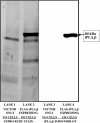
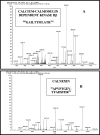
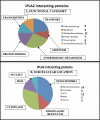
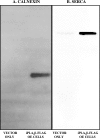
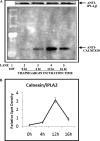

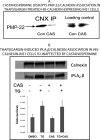

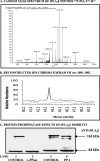




Similar articles
-
Group VIA PLA2 (iPLA2β) is activated upstream of p38 mitogen-activated protein kinase (MAPK) in pancreatic islet β-cell signaling.J Biol Chem. 2012 Feb 17;287(8):5528-41. doi: 10.1074/jbc.M111.285114. Epub 2011 Dec 22. J Biol Chem. 2012. PMID: 22194610 Free PMC article.
-
Calcium-independent phospholipase A2 (iPLA2 beta)-mediated ceramide generation plays a key role in the cross-talk between the endoplasmic reticulum (ER) and mitochondria during ER stress-induced insulin-secreting cell apoptosis.J Biol Chem. 2008 Dec 12;283(50):34819-32. doi: 10.1074/jbc.M807409200. Epub 2008 Oct 20. J Biol Chem. 2008. PMID: 18936091 Free PMC article.
-
Apoptosis of insulin-secreting cells induced by endoplasmic reticulum stress is amplified by overexpression of group VIA calcium-independent phospholipase A2 (iPLA2 beta) and suppressed by inhibition of iPLA2 beta.Biochemistry. 2004 Feb 3;43(4):918-30. doi: 10.1021/bi035536m. Biochemistry. 2004. PMID: 14744135 Free PMC article.
-
A link between endoplasmic reticulum stress-induced β-cell apoptosis and the group VIA Ca2+-independent phospholipase A2 (iPLA2β).Diabetes Obes Metab. 2010 Oct;12 Suppl 2(0 2):93-8. doi: 10.1111/j.1463-1326.2010.01270.x. Diabetes Obes Metab. 2010. PMID: 21029305 Free PMC article. Review.
-
Group VIA Ca2+-independent phospholipase A2 (iPLA2beta) and its role in beta-cell programmed cell death.Biochimie. 2010 Jun;92(6):627-37. doi: 10.1016/j.biochi.2010.01.005. Epub 2010 Jan 18. Biochimie. 2010. PMID: 20083151 Free PMC article. Review.
Cited by
-
Molecular basis of unique specificity and regulation of group VIA calcium-independent phospholipase A2 (PNPLA9) and its role in neurodegenerative diseases.Pharmacol Ther. 2023 May;245:108395. doi: 10.1016/j.pharmthera.2023.108395. Epub 2023 Mar 27. Pharmacol Ther. 2023. PMID: 36990122 Free PMC article. Review.
-
Group VIB Phospholipase A(2) promotes proliferation of INS-1 insulinoma cells and attenuates lipid peroxidation and apoptosis induced by inflammatory cytokines and oxidant agents.Oxid Med Cell Longev. 2012;2012:989372. doi: 10.1155/2012/989372. Epub 2012 Nov 11. Oxid Med Cell Longev. 2012. PMID: 23213352 Free PMC article.
-
Group VIA phospholipase A2 mitigates palmitate-induced β-cell mitochondrial injury and apoptosis.J Biol Chem. 2014 May 16;289(20):14194-210. doi: 10.1074/jbc.M114.561910. Epub 2014 Mar 19. J Biol Chem. 2014. PMID: 24648512 Free PMC article.
-
The structure of iPLA2β reveals dimeric active sites and suggests mechanisms of regulation and localization.Nat Commun. 2018 Feb 22;9(1):765. doi: 10.1038/s41467-018-03193-0. Nat Commun. 2018. PMID: 29472584 Free PMC article.
-
Group VIA PLA2 (iPLA2β) is activated upstream of p38 mitogen-activated protein kinase (MAPK) in pancreatic islet β-cell signaling.J Biol Chem. 2012 Feb 17;287(8):5528-41. doi: 10.1074/jbc.M111.285114. Epub 2011 Dec 22. J Biol Chem. 2012. PMID: 22194610 Free PMC article.
References
-
- Tang J., Kriz R. W., Wolfman N., Shaffer M., Seehra J., Jones S. S. (1997) J. Biol. Chem. 272, 8567–8575 - PubMed
-
- Balboa M. A., Balsinde J., Jones S. S., Dennis E. A. (1997) J. Biol. Chem. 272, 8576–8580 - PubMed
-
- Ma Z., Ramanadham S., Kempe K., Chi X. S., Ladenson J., Turk J. (1997) J. Biol. Chem. 272, 11118–11127 - PubMed
-
- Yang H. C., Mosior M., Ni B., Dennis E. A. (1999) J. Neurochem. 73, 1278–1287 - PubMed
Publication types
MeSH terms
Substances
Grants and funding
LinkOut - more resources
Full Text Sources
Molecular Biology Databases
Miscellaneous

